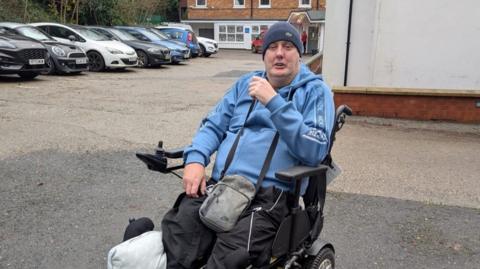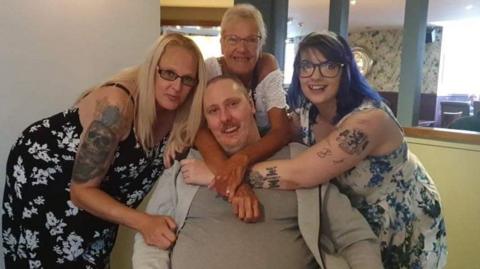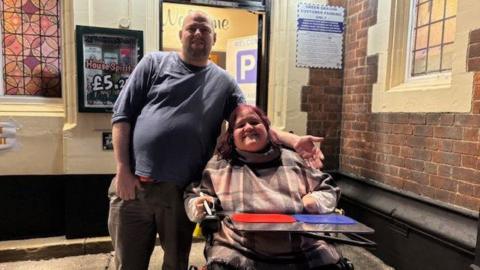Chris's care home is in Rugby, about 10 miles away from where he grew up in Coventry.
He says he lives a "completely sedative life" away from his family and friends.
"I don't live here, I exist," he says.
Before his injury, Chris says "there wasn't a minute in my life that I was on my own".
Now, he says his elderly parents have only managed to visit him a few times. He has made a couple of trips to see friends, but it costs up to £120 in an accessible taxi.
Chris doesn't need 24-hour care, and says he could live an independent life in an accessible property. Since arriving at the care home he says he's only been offered one property to move to - but it wasn't wheelchair accessible.
Coventry City Council says Chris is now on their housing priority system and will be notified if he is shortlisted for a property.



